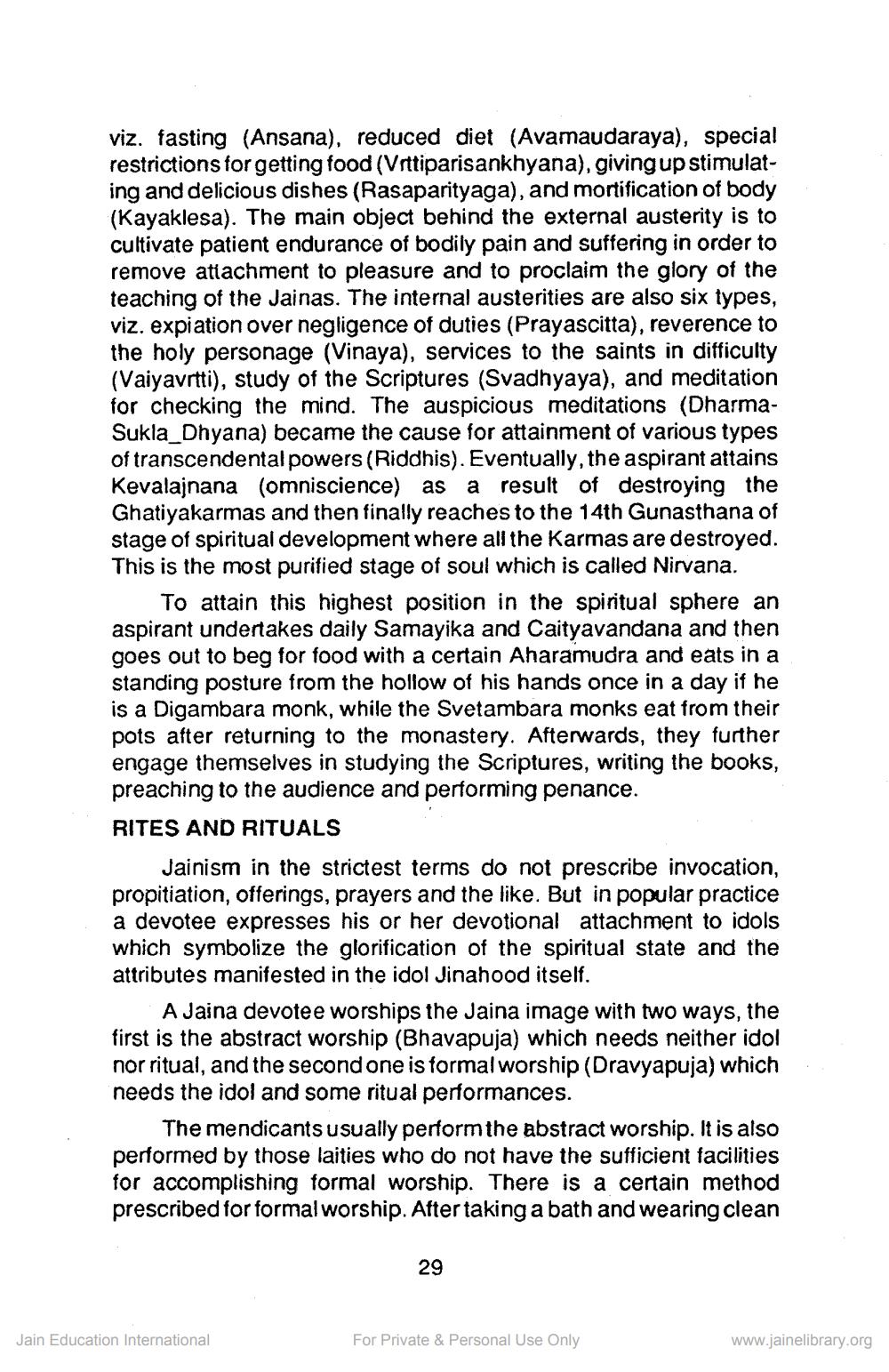________________
viz. fasting (Ansana), reduced diet (Avamaudaraya), special restrictions for getting food (Vrttiparisankhyana), giving up stimulating and delicious dishes (Rasaparityaga), and mortification of body (Kayaklesa). The main object behind the external austerity is to cultivate patient endurance of bodily pain and suffering in order to remove attachment to pleasure and to proclaim the glory of the teaching of the Jainas. The internal austerities are also six types, viz. expiation over negligence of duties (Prayascitta), reverence to the holy personage (Vinaya), services to the saints in difficulty (Vaiyavrtti), study of the Scriptures (Svadhyaya), and meditation for checking the mind. The auspicious meditations (DharmaSukla Dhyana) became the cause for attainment of various types of transcendental powers (Riddhis). Eventually, the aspirant attains Kevalajnana (omniscience) as a result of destroying the Ghatiyakarmas and then finally reaches to the 14th Gunasthana of stage of spiritual development where all the Karmas are destroyed. This is the most purified stage of soul which is called Nirvana.
To attain this highest position in the spiritual sphere an aspirant undertakes daily Samayika and Caityavandana and then goes out to beg for food with a certain Aharamudra and eats in a standing posture from the hollow of his hands once in a day if he is a Digambara monk, while the Svetambara monks eat from their pots after returning to the monastery. Afterwards, they further engage themselves in studying the Scriptures, writing the books, preaching to the audience and performing penance. RITES AND RITUALS
Jainism in the strictest terms do not prescribe invocation, propitiation, offerings, prayers and the like. But in popular practice a devotee expresses his or her devotional attachment to idols which symbolize the glorification of the spiritual state and the attributes manifested in the idol Jinahood itself.
A Jaina devotee worships the Jaina image with two ways, the first is the abstract worship (Bhavapuja) which needs neither idol nor ritual, and the second one is formal worship (Dravyapuja) which needs the idol and some ritual performances.
The mendicants usually perform the abstract worship. It is also performed by those laities who do not have the sufficient facilities for accomplishing formal worship. There is a certain method prescribed for formalworship. After taking a bath and wearing clean
29
Jain Education International
For Private & Personal Use Only
www.jainelibrary.org




